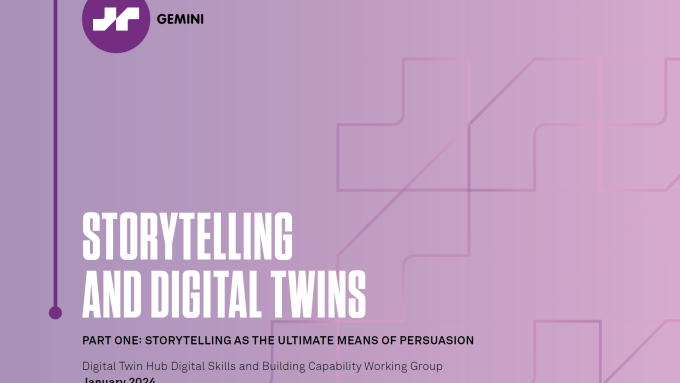Download File

- File Information
- Size: 18.5MB
- Type: pdf
Summary
A digital twin was developed to resolve the effect of floods on individual infrastructure assets and the resulting cascade of effects across the combined network of:
- Anglian Water’s water and sewerage assets.
- BT’s communication assets.
- UK Power Networks’ power network assets.
The digital twin uses simple hierarchical domain ontologies to represent the data describing the assets as a knowledge graph. This data structure is exploited to describe the connectivity and operational states of the assets.
The digital twin demonstrates how to use the hierarchical structure of the ontologies underlying the knowledge graph to achieve interoperability between the data from the different asset owners. It combines the asset data with the output of flood simulations, and models the response both of individual assets and of the combined network to the flood. The digital twin is designed to be extensible. It should be straightforward to extend the breadth of coverage to include assets from other sectors and other regions of the country, and the depth of coverage to include a more granular description of assets and their operational state. Such extensions will be necessary to enable the digital twin to properly address extreme weather scenarios, and to extend the digital twin to other use cases.
A browser-based geospatial visualisation of data from the digital twin allows the assets, logical connectivity of the network and operational state of the assets to be explored. The visualisation is overlaid by data from flood simulations. The data are presented in selectable layers to provide the ability to focus on different aspects of the network. Assets can be selected to view metadata about the asset and the time history of the operational state of the asset throughout the flood. Additional controls facilitate the exploration of the connections to and from individual assets.
A public demonstrator of the current digital twin and visualisation is to be made available on DAFNI, the Data & Analytics Facility for National Infrastructure. The corresponding software and a synthetic data set are published under permissive licences so that asset owners and third parties can test the ideas on their own data and contribute to future developments. The sharing of data and the ability to visualise the connectivity of assets was valuable and led to the correction of anomalies that could not be seen when looking at any single network.
An inconsistency that was present in one ontology was able to be overcome with a conversation and a few lines of extra code, and did not inhibit the functionality of the digital twin. The ontologies could be improved at a later date to address the issue more robustly. In the future, the ontologies could also be aligned with hierarchical ontologies arising from the Information Management Framework. This would aid consistency and interoperability. Although the data were accessed as a knowledge graph, some of it was able to be hosted using relational databases, allowing the use of established technology for each type of data. It was shown that other knowledge graphs could be incorporated into the digital twin. This was demonstrated for data about buildings and live streams of data from river level sensors. Such data could later be included in the evaluation of scenarios by the digital twin.
Future work should consider how to represent scenario-specific information, and how to simulate events efficiently whilst still providing wide-scale data coverage. The level of detail represented in a digital twin should be driven by the needs of use cases. In the case of the current digital twin, it should be extended to include whatever is necessary to describe the resilience of the combined network. This may include extending the digital twin to other domains and sectors. It should also extend work started in this first phase of the project to quantify the value of the increase in resilience that could be achieved as a result of being able to assess the combined network using shared data.


